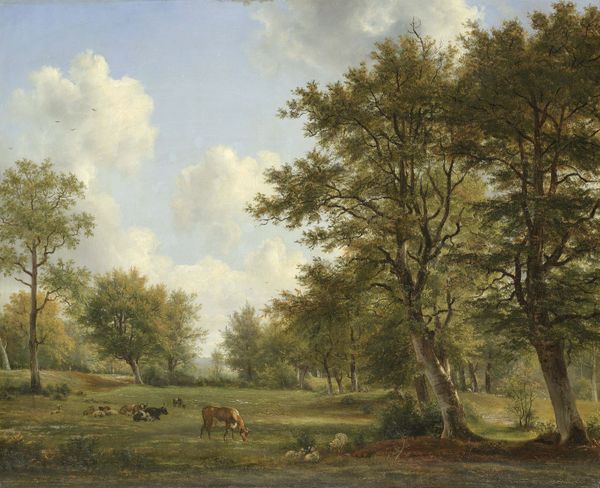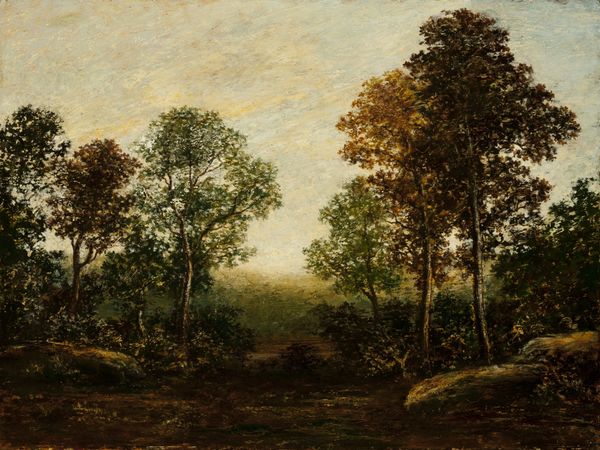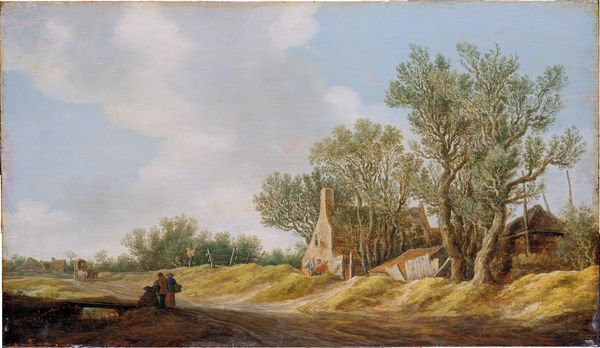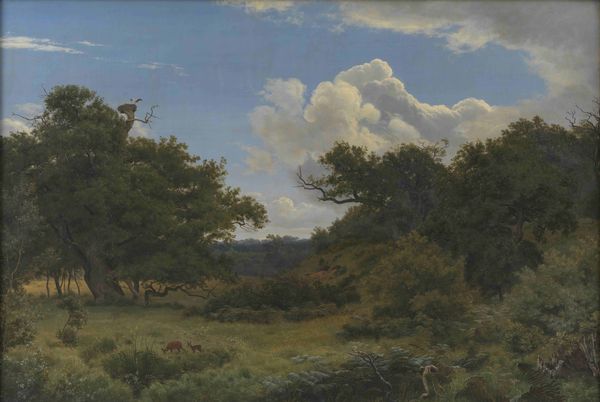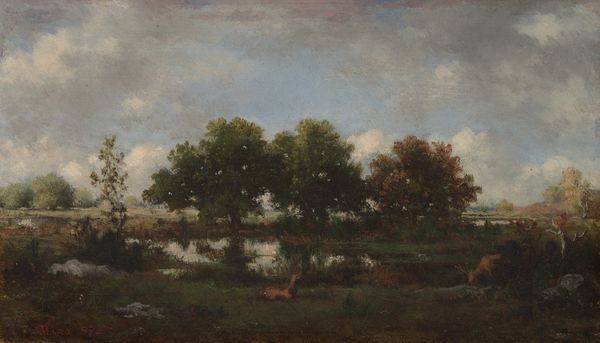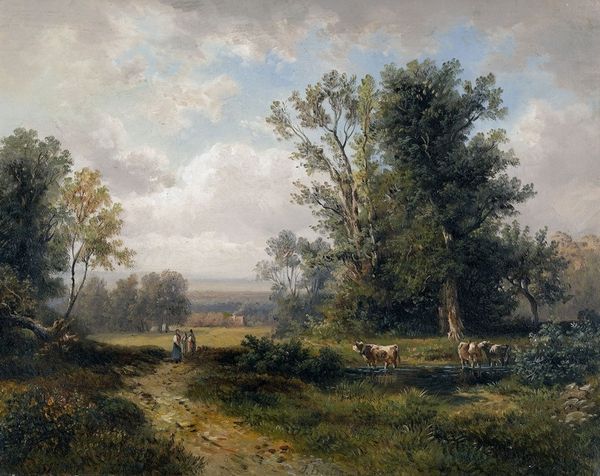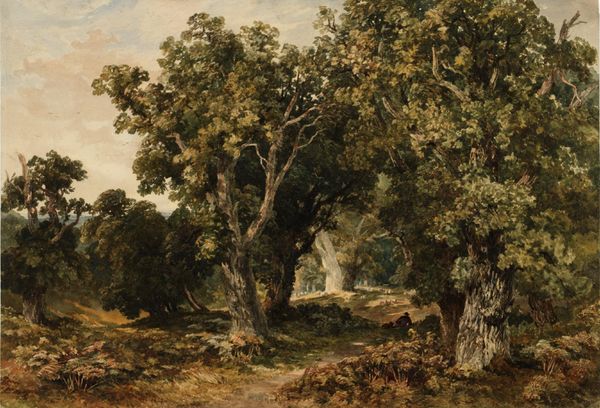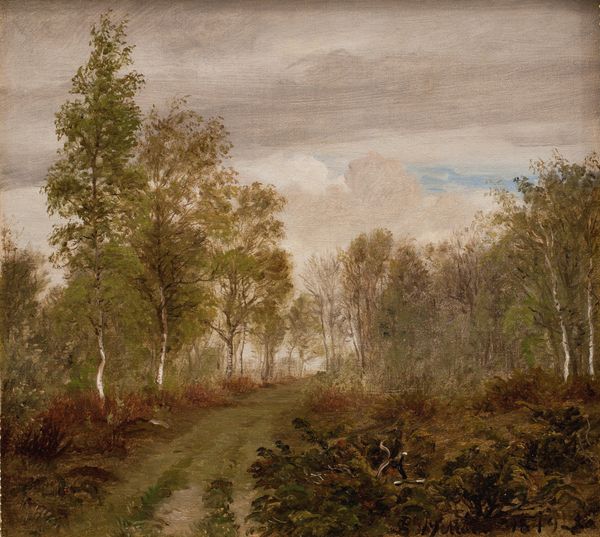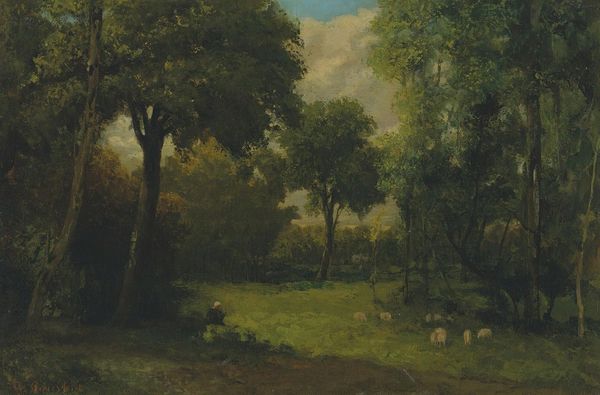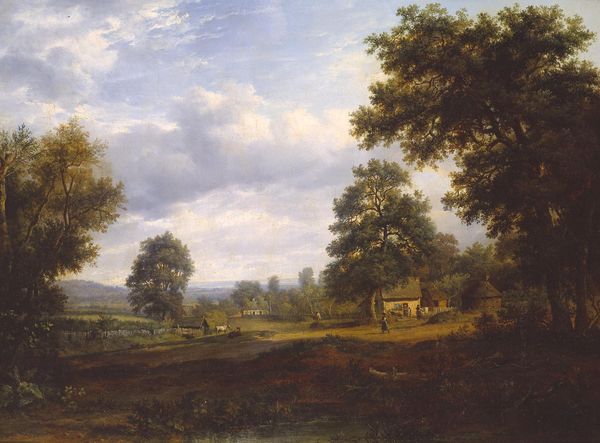
oil-paint
#
oil-paint
#
landscape
#
oil painting
#
romanticism
Dimensions: 73.5 cm (height) x 94 cm (width) (Netto), 85.7 cm (height) x 106.7 cm (width) x 7 cm (depth) (Brutto)
Editor: So, this is Dankvart Dreyer's "The Caroline Spring at Næsby on Funen," created between 1844 and 1845, using oil paint. It’s a landscape, obviously, and I find it quite serene. There's a path winding up a hill...it makes me wonder, what's the main visual element that draws your eye in this piece? Curator: A curious pathway it is. From a formalist perspective, I’m drawn to the masterful arrangement of light and shadow. Notice how Dreyer uses contrasting tonal values to create depth, strategically layering his canvas. The rhythmic repetition of vertical tree trunks acts as visual counterpoint to the undulating curves of the landscape itself, don't you think? It offers a kind of harmonic tension. Editor: That's a nice observation. I hadn’t considered the repetition of the trees in that way. Is there a particular philosophical idea we could apply? Curator: Considering the structure of representation, one could venture that semiotics may have a place here. How does the artist signify an open meadow, for example? Via an intricate play between light and shadow; the formal juxtaposition of these intrinsic compositional choices. It evokes a sense of space and tranquility. But how does Dreyer’s technique contribute to the overall reading? Editor: Well, the brushstrokes are quite fine and delicate, almost blending seamlessly. That might further emphasize the peaceful mood we mentioned initially. So it's the *how*, and *what* is in the painting that ultimately drive the interpretation? Curator: Precisely! And the interrelationships that unfold when viewing the piece; in short, the totality of those compositional and representational qualities. Editor: I see. Analyzing the intrinsic artistic choices like that gives the artwork a stronger voice. Thanks for showing me. Curator: My pleasure. It is my sincere hope that a keener eye may find what I seek to know through observation alone!
Comments
statensmuseumforkunst almost 2 years ago
⋮
We are out in nature with the artist. The trees are a little crooked, just the way that trees often are. Nature may be a little rough here, but not frightening. It all simply seems to be a view of what you are likely to see when venturing out into nature, perhaps seeking out a spring to slake your thirst or because the site has some special significance. Wellsprings are often sacred places, and here we could say that we are looking at a particular site that also represents the wellspring of life and nature. As they won increasing influence on political developments, politically interested citizens kept an open eye on the arts throughout the struggles of the 19th century to define the nation state and national identity. Dreyer's mode of painting was far too coarse and personal to please the supreme arbiter of taste at the time, the fiercely patriotic art historian N.L. Høyen. After Dreyer had repeatedly been the target of Høyer's criticism about painting in an un-Danish fashion he had to give up painting as a profession.
Join the conversation
Join millions of artists and users on Artera today and experience the ultimate creative platform.

